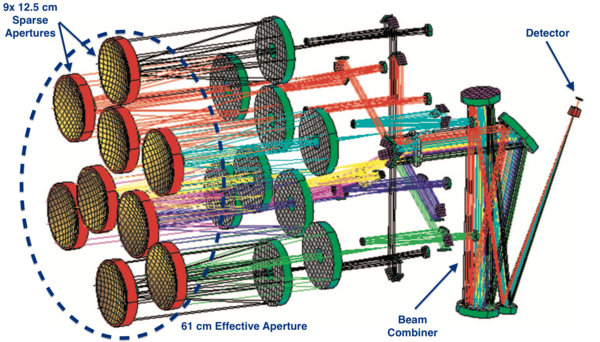Sparse Apertures for Next Generation Optical Space Telescopes
Technology Roadmap Sections and Deliverables
This technology roadmap is identified as follows:
- 1SASOT - Sparse Aperture Space Optical Telescope
This a Level 1 roadmap that evaluates the system architecture required to achieve large effective aperture space optical telescopes using sparse aperture techniques. A Level 2 roadmap would describe the technological progress required to achieve a particular sparse aperture technique (deployable, formation flying, or erecting on-orbit). A Level 3 or 4 roadmap would describe individual enabling technologies such as on orbit alignment metrology, and precision formation flying).
Roadmap Overview
The angular resolution of a telescope is proportional to the size of the aperture. The mass and thus cost of space telescopes increases exponentially with aperture diameter. There is a need for systems that can produce the equivalent of a large aperture with low mass. This can be achieved by creating a synthetic aperture using multiple sub-apertures. One method to achieve this is to create a large number of small spacecraft, flying in a formation that creates the synthetic aperture.
Currently, a sparse aperture space telescope has not yet been fielded. In 2006, Lockheed Martin built a laboratory demonstration of a sparse aperture space telescope, which is depicted in the figure below. Currently, the technology appears be at approximately TRL 4. Research has proven the feasibility of the technology, however, significant technology development must be completed before a space technology demonstration is ready.
DSM Allocation
...
Roadmap OPM Model
...
